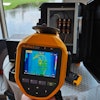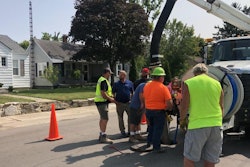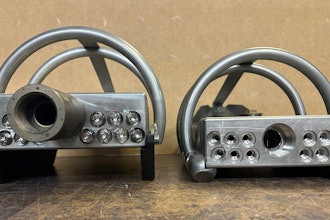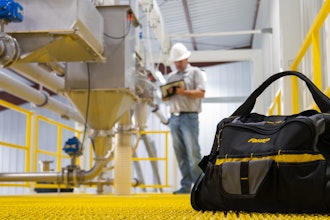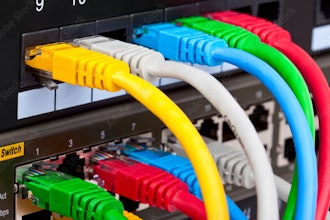It seems that Charles Darwin’s theory of “Survival of the Fittest” applies to industrial plant management—because only the smartest enterprises can survive today’s aggressive competition and volatile economic conditions. Fortunately, modern next-generation analytics are more accessible than ever, giving plant maintenance managers new tools they can leverage to work smarter, not harder. Driven by Artificial Intelligence (AI) and Machine Learning, augmented analytics provide advanced, prescriptive insights for extending the life of critical assets, analyzing overall equipment effectiveness (OEE) and preventing unexpected downtime.
The previous generation of analytics focused on using data to produce aesthetically pleasing charts and dashboards. To dive deeper, managers often had to call in experts. Skilled data scientists and business consultants had to work behind-the-scenes magic to extract meaningful conclusions from mountains of data. All too often, the data lost contextual relevance and urgency by the time it passed through the data analyst’s filters. This old-school process meant traditional asset maintenance programs were knee-jerk reactionary and seldom preventive or prescriptive. However, this process is no longer sufficient. Plant managers must upgrade their performance — if they want to remain competitive.
Technology helps level the landscape by giving plants of all sizes and types the opportunity to tap into the valuable power of data. Today, advanced analytics can perform “heavy lifting” in the back end and work to connect, prepare and relate data from a variety of disparate sources across the enterprise. This removes the barriers to entry, giving maintenance teams easy-to-use tools that help to define goals, select algorithms, train the module and test outcomes. AI’s mystery has been replaced by user-empowering interfaces. The result is trusted insights for better business decisions. For industrial plant maintenance managers, this means prescriptive asset management and understanding best steps for extending the value of equipment and preventing unplanned downtime.
The use of voice-activated personal digital assistants has also become a reality. Imagine business users being able to speak into their phones and ask, “How many replacement valves should I order?” or “What is the OEE score for this piece of machinery?”. This represents a new wave of disruption, which some analyst firms, like Gartner, call “Augmented Analytics.”
In the report, “Critical Capabilities for Analytics and Business Intelligence Platforms,” published in May 2018, Gartner wrote, “By 2020, the number of users of modern business intelligence and analytics platforms that are differentiated by augmented data discovery capabilities will grow at twice the rate — and deliver twice the business value — of those that are not.”
What Does Augmented Analytics Mean for Plant Maintenance?
Solution providers, who specialize in analytics, are setting out to transform the Business Intelligence (BI) experience from descriptive (what is happening) to diagnostic (why is it happening) and predictive (what will happen). They are focusing on capabilities which tap into the power of data science to instantly understand the variables driving their Key Performance Indicators (KPIs). Requiring no specialized expertise, such tools help business users automatically find meaningful relationships between a given KPI and countless business variables, and then automatically generate visualizations and dashboards that explain the KPI’s behavior.
For asset maintenance teams, the KPIs could track cost of asset down-time, investment in replacement parts, overall equipment efficiency, and energy consumption. The goal is to monitor and identify early warning signs of a potential asset failure. By spotting the warning signs early, action can be taken to prevent the failure. More than that, modern analytics will help prescribe the best response. In complex manufacturing, there are often several possible solutions to any asset performance issue.
What to Look for in Modern Augmented Analytics:
Visualization Tools. The dashboards generated will help visualize results and prioritize the attributes that have the greatest impact on particular KPIs. Data can be presented as pie charts, graphs or barometers. Ideally, users should be able to choose formats for the displays and be able to collect and export data for sharing.
Natural Language. Another key attribute, which enhances usability, is a semantic layer (a common set of business definitions across analytic instances). This will give users the ability to define machine types, name machine operations and apply specific terms to operational process. This helps create reports, which are more personalized and therefore, more trusted by team members.
Personal Digital Assistants. Natural language processing creates the ability to have personal digital assistants listen and respond to voice commands. This can be a tremendous value to technicians working in the field or repairing assets on the shop floor. Personal digital assistants also benefit from a semantic layer so that responses are appropriate.
Contextual Relationships. Context is important. By selecting what context is considered relevant, the user controls the variables and defines personalized priorities, rather than falling back on pre-built standard performance measurements.
Contributing Factors. Business users can also add data about geographic location, environment, weather, suppliers and product specifications, which might impact the asset’s performance. Applying insights across an extended data set can lead to a more complete picture of what is driving machine efficiency and plant performance.
Machine Learning. Built-in Machine Learning capabilities will help the solution improve accuracy over time. The ability to expand its knowledge-base and “learn” the user’s expectations will make the solution more and more valuable. This will lead to more applications and trust from the team.
Take-Aways
Industrial plant maintenance faces many challenges today, such as pressures to speed response time, meet customer orders, reduce waste and boost productivity. For many organizations, the key is boosting performance of assets. Improving the lifespan of equipment and making smart decisions about efficiency and repair can make or break an organization. With advanced augmented analytics, the maintenance team has another valuable resource on its side. Now is the time to take the steps to become one of the tech-savvy plants, which leverage smart analytics.
Kevin Price is the Technical Product Evangelist, EAM, for Infor.

